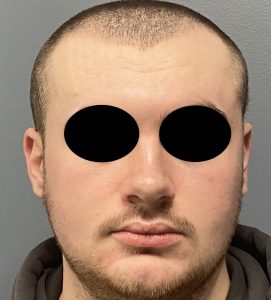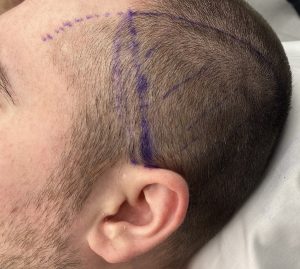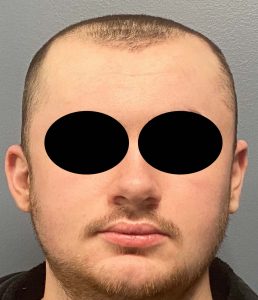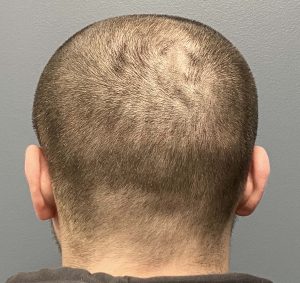Background: The skull has five basic surfaces, all of which can be either augmented or reduced.The central 3 surfaces (forehead, top of head and back of head ) are only bone under the scalp and this reduction in these areas needs to be done by bone removal. However the two sides of the skull, while having a bony base, has a large outer muscle cover. Thus side of the head reduction is directed more at muscle removal than any bone shaving.
Some question whether side of the head reduction by muscle removal is either effective and safe. The temporal muscle is significant in thickness, even its thinner posterior portion above the ear. It creates a thickness equal to that of the bone and sometimes even greater than that of the bone. The definitive test that demonstrates the contribution of the temporal muscle to head width reduction is the wide open mouth test. Have the patient open their mouth to maximal interincisal distance and see what happens to the side of the head. If it gets more narrow, and it usually does, this shows the effect of muscle reduction on head width shape. This works because as the mouth opens it elongates the temporal muscle which makes it thinner. The surgical effect is greater than this test because the muscle is removed and not just lengthened. (at least at the posterior part of the muscle)
The safety of this aesthetic procedure is defined by what adverse effects can occur from the muscle removal. It is understandably hard to imagine that removal of a portion of the muscle does not have some negative effect on its function. (mouth opening) But it does not for two reasons. First the temporal muscle is but one of the muscles that works the lower jaw so it does not do so is in isolation. Secondly, even though the posterior portion of the muscle makes up half of its surface area, it only constitutes about 30% of its mass. So not enough of it is removed to make a dent in its function.

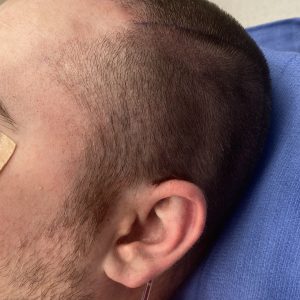

Key Points:
1) Reduction of the wide or convex side of the head is effectively treated by the temporal muscle reduction/removal procedure.
2) A good preoperative test of the potential effective of temporal reduction surgery is the wide open mouth test.
3) The temporal reduction procedure consists of complete removal of the posterior portion of the muscle and release of the anterior portion in some cases.
Dr. Barry Eppley
World-Renowned Plastic Surgeon



